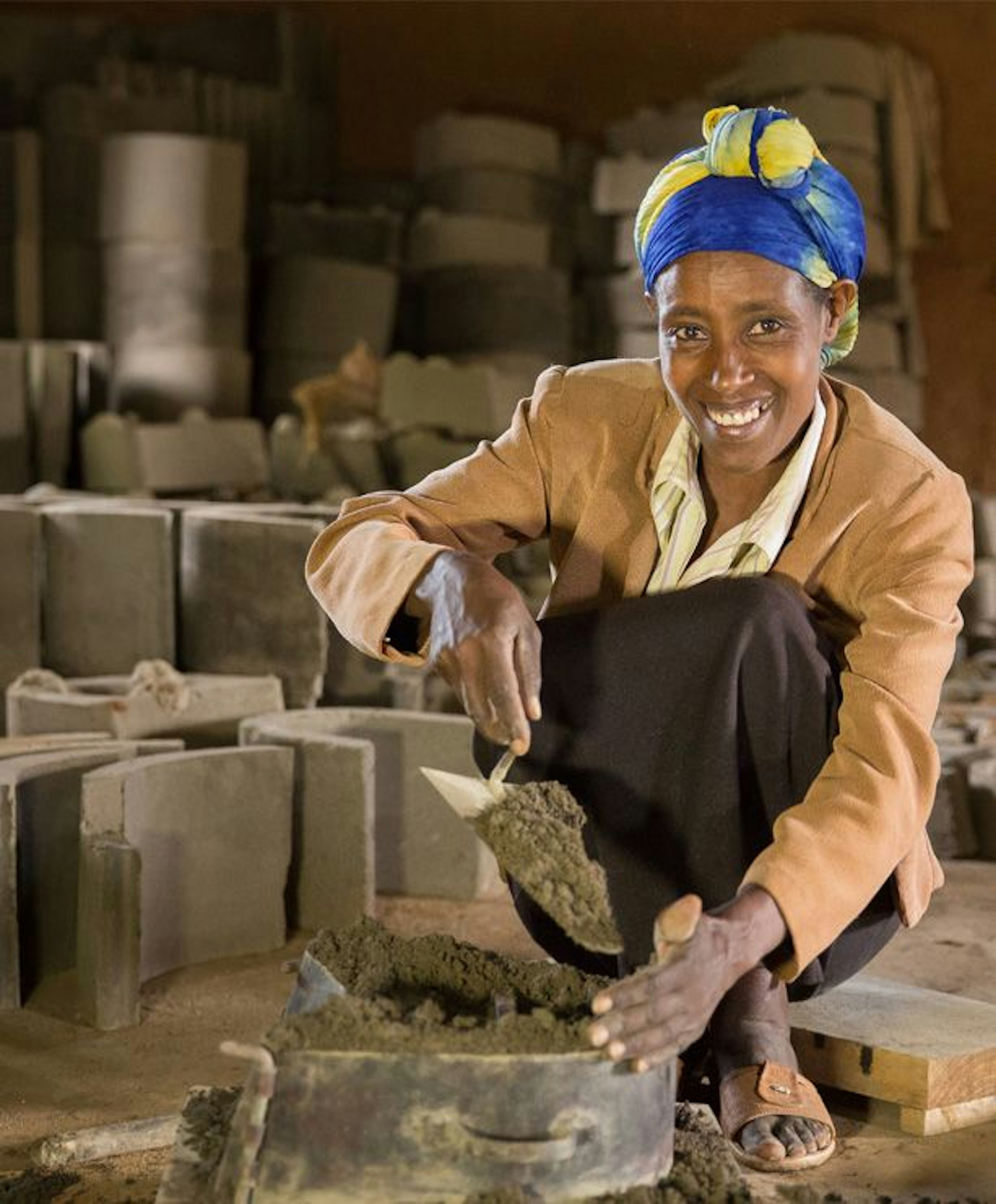Carbon credits

Overview
Companies and individuals purchase carbon credits to offset their own greenhouse gas (GHG) emissions and to support climate work elsewhere. The carbon market is growing rapidly.
Carbon credits can be produced through various activities. Forestation projects remove carbon from the atmosphere by storing it in trees. Renewable energy plants replace fossil fuel plants, reducing GHG emissions. Energy efficiency projects, such as improved cookstove projects, reduce the use of coal, wood or other energy sources.
Fairtrade partners with The Gold Standard Foundation to support farmers and communities in producing carbon credits through reforestation/afforestation, renewable energy, and energy efficiency projects.
The salient issues in the carbon credits sector (in the order of saliency):
- Climate change
The climate impacts of a carbon credit project depend on many variables. Many projects have failed to reduce emissions or remove carbon from the atmosphere.
- Water & Biodiversity
In some forestation projects, invasive, fast-growing trees have been planted, altering local biodiversity. Hydropower projects may change the flow of rivers, aquatic biodiversity and livelihoods downstream.
- Self-determination
Many large carbon projects have been planned without meaningful engagement with local people and have caused forced displacement, land grabbing and changes in livelihoods.
- Living income
Some carbon projects have provided employment, technical training and technology transfer to local people but many have not. Some projects reduce local livelihoods, through changes in land use or water resources.
- More information on risks in carbon credits

Root causes
Lack of regulation: Weak standardisation and regulation of the carbon credit industry leaves space for subjectivity, exaggeration and greenwashing. At the same time, some recent studies suggest that companies buying carbon credits are also more likely to reduce their emissions than companies which are not.
Unequal distribution of value: The price of carbon credits has been low. Middlemen between carbon credit buyers and producers are many, and very little financial value usually accrues to local communities.
Rapidly growing market: The rapidly growing demand puts pressure on project timelines and often trumps proper analysis of projects’ human rights and environmental externalities.
Scientific complexity: Carbon credits can only be gained from projects that are “additional” to business-as-usual, but this additionality rests on complex baseline estimations. It can also be difficult to estimate the full lifecycle impacts of a project.

Stay updated
Partnering for change
Companies can be part of the solution by identifying and addressing the most serious risks and root causes in collaboration with farmers, workers and other affected people. Sign up to receive updates as we add new information to this Map, or to hear how Fairtrade can support your corporate sustainability due diligence.
Map View